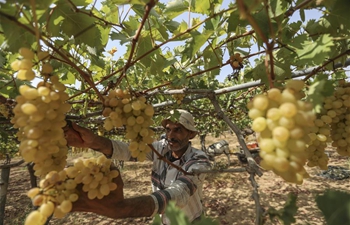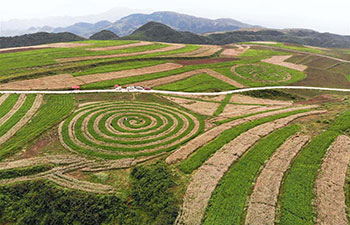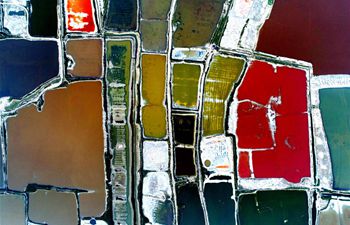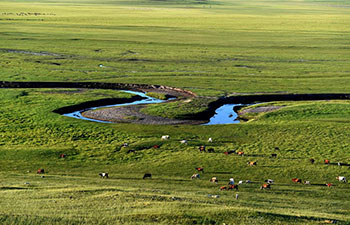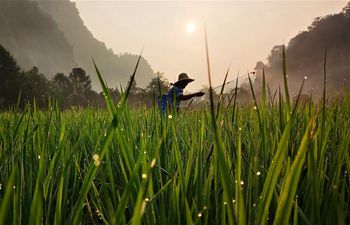LOS ANGELES, July 26 (Xinhua) -- A new study, published Thursday in the Royal Society journal Proceedings of the Royal Society B: Biological Sciences, shows for the first time that animals may be able to use their own muscles to get water when it's not available.
"We know about the importance of fat reserves to fuel the energetic costs of reproduction. But what about water? Our study shows that during reproduction, muscle metabolism is linked to the water requirements of developing offspring. Fat is only about 10 percent water, whereas muscle is closer to 75 percent, so burning muscle will release extra water," George Brusch IV, lead investigator for the project and doctoral student at Arizona State University, said in a press release.
"From an evolutionary perspective, the concept of capital breeding -- or using stored resources to fuel reproduction -- is currently restricted to energetic needs. We propose that this should extend to a broader, multi-resource strategy that also includes water allocation," said Brusch.
By studying the effects of water deprivation on the reproductive efforts of female Children's pythons, researchers found that muscles play an important role in providing water to the body when none is available.
The medium-sized snake that reproduces during the dry-season in Australia, where natural water sources are extremely limited.
"Female Children's pythons can change how they use internal resources based on limitations in the environment," said Brusch," said Brusch.
Understanding exactly how animals cope with resource restrictions will help scientists predict how the animals may be impacted by future climate change, according to the researcher.
During the study, the researchers paired pregnant Children's pythons with similarly sized non-reproductive females. During a three-week period when the snakes were pregnant, only half of the pairs had access to water.
Reproductive females, both in the lab and the wild, don't eat during pregnancy and rely on internal reserves such as fat and muscle for their energy needs.
The scientists then measured the by-products of burning fat and muscle such as ketones and uric acid, as well as muscle size and impact on the snakes' eggs and clutch sizes.
The result shows that the animals without water burned more muscle than fat to meet their water requirements. In addition, the animals without water laid a similar number of eggs per clutch, but their eggs weighed less and the shells were thinner.
Most animals need steady access to water in order to survive, especially during reproduction, and the authors suggest that using muscle as a water store may be a widespread phenomenon.






